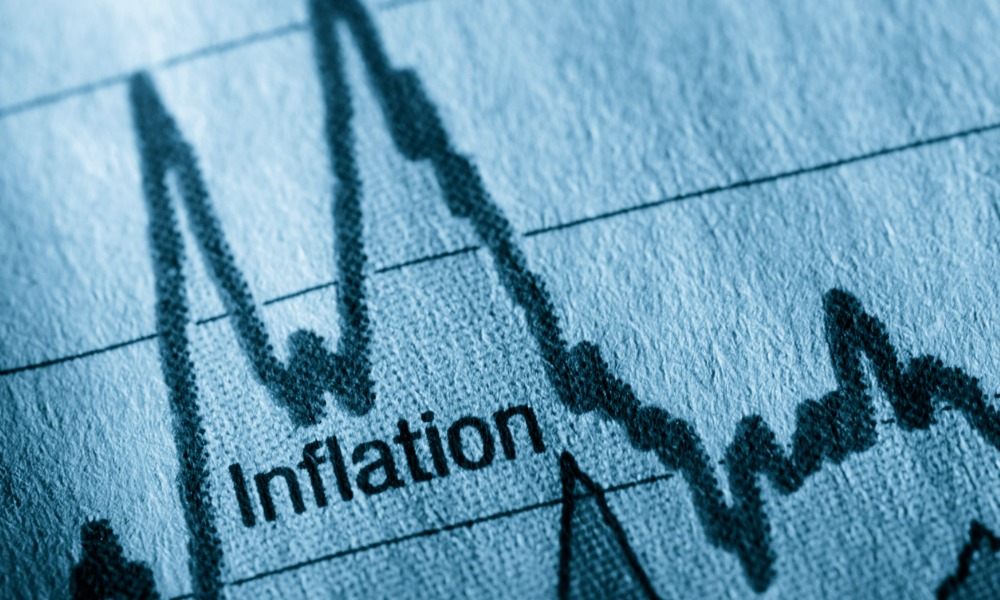One investment firm sees long-term risks that could push the BOC off its hawkish path

The Bank of Canada has pushed forward with another quarter-point hike in interest rates, citing strong economic data and on-target inflation. But it accompanied the move with its usual dovish language, saying it “will remain cautious in considering future policy adjustments.”
The central bank’s muted hawkishness was mirrored in the most recent quarterly fixed-income outlook from Cumberland Private Wealth. “While the extremely robust employment trends keep the economy on trend in the near term, our outlook remains uncertain in the longer run,” said Gaurav Dhiman, Cumberland’s lead manager for Fixed Income.
According to Dhiman, the growth story has been supported by Canadian consumers’ indebtedness, and the economy has some cushion in place from infrastructure spending that’s already been deployed. However, with rising interest rates increasing consumers’ debt-service expenses, he said a deleveraging cycle is due. He also noted other developing headwinds, such as measures to cool down the housing markets — which the firm expected to have an impact starting in Q2 — and possible challenges from US President Trump’s renegotiation of NAFTA.
“We expect Bank of Canada to continue on its path of gradual removal of accommodation with two or three rate hikes in 2018,” he said. “However, if any of our above highlighted risks play out, we could see a pause in tightening in second half of the year.”
While the firm believed the Canadian bond markets have priced in three more possible interest-rate hikes this year, it predicted that number to be the upper limit of stimulus withdrawal given the risks of excessive hawkishness.
The firm’s outlook anticipated a near-term slowdown of flows into bond funds, but forecast long-term support for the asset class as demographic trends collide with rising yields. Dhiman noted risks to their yield outlook for Canada, including a slowdown in exports and consumption as well as a softening in home prices.
“[However], a sustained recovery in commodities or sustained pick up in non-energy exports would lead to some stability and pick-up in growth/inflation ultimately resulting in higher yields,” he said.
Related stories:
Millions of Canadians already struggling with interest rate rises
Passive mania moving into fixed-income ETFs
The central bank’s muted hawkishness was mirrored in the most recent quarterly fixed-income outlook from Cumberland Private Wealth. “While the extremely robust employment trends keep the economy on trend in the near term, our outlook remains uncertain in the longer run,” said Gaurav Dhiman, Cumberland’s lead manager for Fixed Income.
According to Dhiman, the growth story has been supported by Canadian consumers’ indebtedness, and the economy has some cushion in place from infrastructure spending that’s already been deployed. However, with rising interest rates increasing consumers’ debt-service expenses, he said a deleveraging cycle is due. He also noted other developing headwinds, such as measures to cool down the housing markets — which the firm expected to have an impact starting in Q2 — and possible challenges from US President Trump’s renegotiation of NAFTA.
“We expect Bank of Canada to continue on its path of gradual removal of accommodation with two or three rate hikes in 2018,” he said. “However, if any of our above highlighted risks play out, we could see a pause in tightening in second half of the year.”
While the firm believed the Canadian bond markets have priced in three more possible interest-rate hikes this year, it predicted that number to be the upper limit of stimulus withdrawal given the risks of excessive hawkishness.
The firm’s outlook anticipated a near-term slowdown of flows into bond funds, but forecast long-term support for the asset class as demographic trends collide with rising yields. Dhiman noted risks to their yield outlook for Canada, including a slowdown in exports and consumption as well as a softening in home prices.
“[However], a sustained recovery in commodities or sustained pick up in non-energy exports would lead to some stability and pick-up in growth/inflation ultimately resulting in higher yields,” he said.
Related stories:
Millions of Canadians already struggling with interest rate rises
Passive mania moving into fixed-income ETFs



